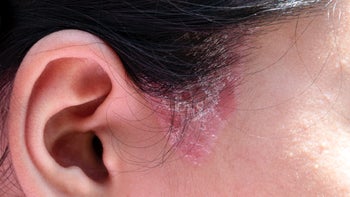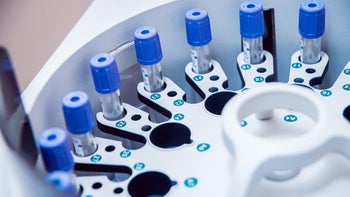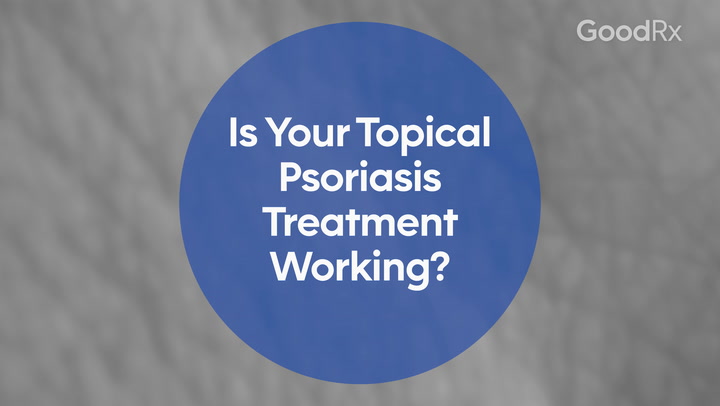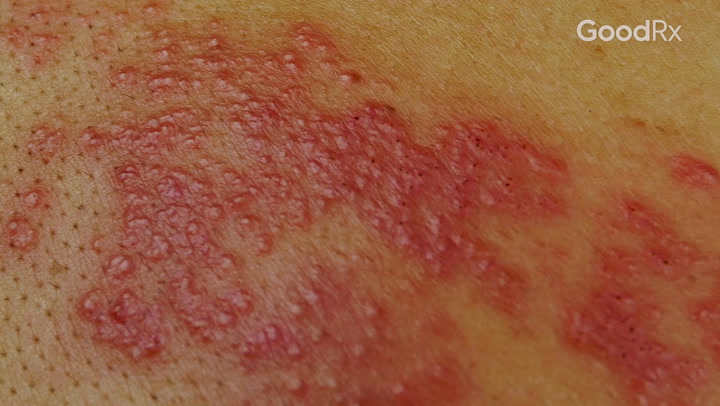
7 Cortisone Shot Side Effects and How to Manage Them
Key takeaways:
A cortisone shot refers to an injection of a corticosteroid medication into a joint. It helps manage pain and inflammation. A local anesthetic is often administered at the same time, too.
Cortisone shots can cause side effects like short-term pain and inflammation, skin changes, and higher blood glucose (sugar) levels. These side effects should subside with time.
Most side effects of cortisone shots are mild. But serious side effects, like joint infection and cartilage damage, are possible, too. They should be reported to and managed by your healthcare provider.
Access savings on related medications
Table of contents

Many people receive cortisone shots for pain relief and mobility support — not just professional athletes. They can lessen inflammation from a variety of health conditions, such as arthritis, bursitis, and carpal tunnel syndrome. A healthcare provider can inject a shot into the knees, hips, or other joints that may be bothering you.
Cortisone isn’t the actual name of the medication, though. These shots are typically made up of a different corticosteroid, such as triamcinolone (Kenalog) or methylprednisolone (Depo-Medrol).
Many people receive a local anesthetic, such as lidocaine (Xylocaine) or bupivacaine (Marcaine), at the same time as the cortisone shot. The corticosteroid aims to lessen joint pain and inflammation while the local anesthetic works to provide more immediate pain relief.
Like all injections, cortisone shots can cause side effects. Most side effects are manageable at home. But serious side effects may need to be managed by your healthcare provider.
Good to know: There is a medication called cortisone. But it’s only available as a tablet, so it’s not one of the corticosteroids that can be injected with a cortisone shot.
Cortisone shot side effects at a glance
After receiving a cortisone shot, it's possible you may experience some side effects. Most of them are temporary and relatively mild.
Long-term side effects: Corticosteroids like cortisone can have serious effects when taken for a long time, or at a higher dose. Here are some additional side effects that you should be aware of.
Cortisone shots for acne: Dermatologists use cortisone shots to treat cystic and nodular acne. Read more about how they work for treating skin lesions.
Corticosteroids and the immune system: Corticosteroids can suppress your immune system. Learn about what's at risk with this side effect on corticoid steroids and other medications.
Common cortisone shot side effects include:
Short-term pain and inflammation in the affected joint
Skin lightening (hypopigmentation) and other skin changes
Facial flushing
Sleep changes
Higher-than-normal appetite
High blood glucose (sugar)
Rare but serious cortisone shot side effects include:
Joint infection
Nerve damage
Cartilage damage
Tendon rupture
Allergic reactions
Read more like this
Explore these related articles, suggested for readers like you.
Here’s how to manage seven notable cortisone shot side effects.
1. Short-term pain and inflammation
After receiving a cortisone shot, you may experience a “cortisone flare.” This is a short-term period of worsening pain and inflammation near the injection site. One study estimated that these flares happen to about 1 in 5 people who receive cortisone shots.
The cortisone flare happens when the numbing from the local anesthetic starts to wear off. This could be within hours to days of receiving the cortisone shot. Crystallization (the formation of crystals) of the corticosteroid medication in the joint causes the initial pain and inflammation after receiving the shot. Fortunately, this flare usually only lasts 1 or 2 days.
To help manage symptoms of a cortisone flare, try to take it easy and rest your joint in the days following the injection. Applying ice packs to the injection area for about 15 minutes at a time can also calm pain and swelling. Don’t apply ice packs directly to your skin, though — use a towel or a cloth to protect your skin. You can also consider trying over-the-counter (OTC) pain relievers like acetaminophen (Tylenol) or ibuprofen (Advil, Motrin), if needed.
If pain becomes severe or unmanageable at any point, let your healthcare provider know.
2. Skin-related side effects
Cortisone shots can sometimes lighten the skin around the injection site. This is reported to happen in up to 1 in 25 of people who receive cortisone shots. This may be more noticeable in people with darker skin, and it’s slightly more common with triamcinolone-based cortisone shots.
Cortisone shots can also cause “dimpling,” or divots, in the skin around the injection site. This is typically due to loss of fat cells around the injection site.
Skin changes can last weeks to months after receiving a cortisone shot. And while they tend to go away on their own, it may take 6 months or longer for this to happen. Speak with your healthcare provider if you have concerns about skin changes associated with cortisone shots.
3. Facial flushing
Cortisone shots can cause your face and chest to become red and warm, also known as flushing. The reported frequency of flushing varies widely, but one study found that it occurred in up to 2 out of 5 people who received triamcinolone injections.
Thankfully, facial flushing isn’t a long-term problem. When it happens, it typically occurs within the first 24 hours of receiving a cortisone shot and resolves within 1 to 2 days.
There's not much you can do to treat facial flushing if it happens. But you should still let your healthcare provider know if you experience it. If it’s bothering you, they may be able to adjust your dose and specific corticosteroid when preparing your future cortisone shots.
4. Insomnia
Insomnia, or difficulty sleeping, can happen after receiving a cortisone shot. This is because corticosteroids mimic cortisol. Cortisol is a natural hormone that’s released when you’re stressed. Higher cortisol levels can lead to insomnia.
A few simple tricks can go a long way with managing insomnia from these shots. Consider:
Trying to schedule your cortisone shot appointments in the morning versus the afternoon (so you’re less likely to have trouble falling asleep later at night)
Creating a comfortable environment to help promote sleep, such as a cool, dark room
Trying mindfulness practices, such as breathing and meditation, to help de-stress and unwind prior to sleeping
It’s not ideal to treat a medication side effect with another medication. But with your healthcare provider’s OK, you can also consider trying an OTC sleep aid if you’re still having trouble sleeping.
5. Higher blood glucose
Although cortisone shots for joint pain aren’t given into the bloodstream, they can still have an effect on blood glucose levels. Cortisone shots may raise your blood glucose for a few days after the injection, which can be problematic if you’re living with diabetes.
If you have diabetes, talk to your healthcare provider before receiving a cortisone shot. This is especially important if you’re receiving the injection from a provider that you don’t normally see. The person who manages your diabetes may want you to monitor your blood glucose more frequently in the days after receiving the shot. They may also recommend temporarily adjusting your blood glucose-lowering medications, if needed.
If you experience abnormally high blood glucose in the few days after receiving a cortisone shot, let your provider know right away. Possible symptoms of high blood glucose include increased thirst, frequent urination, and a pounding headache.
6. Joint infection
Rarely, cortisone shots can cause an infection in your joint fluid (septic arthritis). Symptoms of septic arthritis may include:
Pain in the joint, which can be severe
Swelling, warmth, or redness in the joint
Fever and chills
Weakness
Inability to move the joint freely
Inability to put weight on the joint
If you experience any symptoms like these, let your healthcare provider know right away. Septic arthritis can be life-threatening and is considered a medical emergency. You’ll likely need to be treated with antibiotics. You may need to have fluid drained out of the infected joint in some cases as well.
7. Cartilage damage
Cortisone shots have been known to sometimes cause joint cartilage damage — especially if you receive shots often.
Cortisone shots tend to offer the most benefit when they’re given in occasional, low doses. More frequent injections at higher doses are more often associated with cartilage loss.
Because of this risk, your healthcare provider may recommend that you only receive cortisone shots a few times per year. But there’s not a specific cutoff for how many cortisone shots are appropriate in a year. This will boil down to your specific situation and your provider’s expertise.
To help lower your risk of cartilage damage from cortisone shots, talk with your provider about how best to navigate cortisone shots for your condition. After all, cortisone shots are not a curative treatment. They’re meant to provide temporary pain relief.
When to contact a healthcare provider about cortisone shot side effects
Any injection has the potential to cause side effects, including cortisone shots. Most are relatively mild and temporary. But if you’re experiencing something that’s really bothering you, make sure to listen to your body and loop in your healthcare provider for advice.
In other cases, it’s best to seek emergency care. Be on the lookout for potentially serious side effects, such as:
Symptoms of an allergic reaction, including hives, shortness of breath, or swelling of lips, tongue, or face
Symptoms of a joint infection, such as fever, chills, and pain
Severe joint pain
Very elevated blood glucose readings
The bottom line
Common cortisone shot side effects include short-term pain and inflammation, skin changes, and high blood glucose. More serious side effects, such as joint infection and cartilage damage, are also possible. If you're thinking about receiving a cortisone shot, talk to your healthcare provider for more information.
Why trust our experts?



References
Alsop, R. J., et al. (2016). The lipid bilayer provides a site for cortisone crystallization at high cortisone concentrations. Scientific Reports.
Cardone, D. A., et al. (2002). Joint and soft tissue injection. American Family Physician.
Cushman, D. M., et al. (2023). Prospective evaluation of pain flares and time until pain relief following musculoskeletal corticosteroid injections. Sports Health.
Kim, N., et al. (2015). Elevated hemoglobin A1C levels correlate with blood glucose elevation in diabetic patients following local corticosteroid injection in the hand. Plastic and Reconstructive Surgery.
Park, S. K., et al. (2013). Hypopigmentation and subcutaneous fat, muscle atrophy after local corticosteroid injection. Korean Journal of Anesthesiology.
Patrick, M., et al. (1987). Facial flushing after intra-articular injection of steroid. British Medical Journal (Clinical Research).
Stephens, M. B., et al. (2008). Musculoskeletal injections: A review of the evidence. American Family Physician.
Thau, L., et al. (2023). Physiology, cortisol. StatPearls.
Wernecke, C., et al. (2015). The effect of intra-articular corticosteroids on articular cartilage: A systematic review. Orthopaedic Journal of Sports Medicine.





























